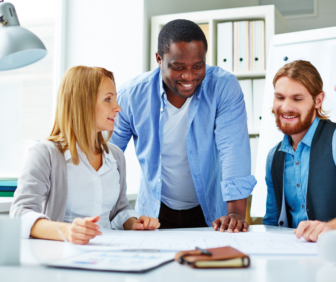
We have explored frequently that those with a four-year degree or more over a forty-year career work more and earn more than those with less education attainment. One of the reasons being that those with a B.A. or more tend to keep their jobs during downturns and if they lose a job get back to work quicker following a downturn.
This post explores whether that pattern held true in the pandemic labor market. Did workers with a B.A. in 2020 work more and earn more than those with less than a B.A.? The data comes from the U.S. Census Bureau’s table on money earnings from all work by education attainment.
The data allow us to look at what workers earned from all work in 2020: Where some worked full time, year round in one job, but also some worked less than full time, while other work more than full time. Some worked more than one job. Some worked in gig jobs. Some were self employed. Some earned overtime pay and others got bonuses from work.
We looked at data for U.S. workers 25 and older. We used $52,500 as the the threshold for being a middle class household of three. Our findings are displayed in the table at the bottom of this post.
Before we dive into the data here are the two headlines: In the nation’s pandemic labor market those with a B.A. worked more and had higher money earnings from work than those without a four-year degree. And the labor market was two-tiered with nearly six in ten (57 percent) who worked in 2020 had money earnings from work less than our three person household middle class threshold.
Let’s start our look at the data with how much people worked in 2020 by education attainment. As you can see in the table, the higher the education attainment the higher proportion of those who worked at all in 2020. Ranging from 57.4 percent for those with a high school degree to 74.2 percent for those with a four-year degree or more. The same pattern holds true for those who defied the odds of a pandemic labor market and worked full time and year round: the higher the education attainment the higher the proportion of those who worked full time and year round. Ranging from 36.2 percent for those with a high school degree to 55 percent for those with a B.A. or more.
Now let’s look at money earnings from all work in 2020. We look at money earnings by education attainment in four ways: proportion of households that did not earn enough to meet our middle class of three household threshold, proportion of workers with work earnings of at least $100,000, median work earnings, and average work earnings.
On each of these four measures the higher the education attainment the more you earned. With the most significant gap being between those with a B.A. or more and those with an associate degree or less. Median money earnings from work ranged from $34,540 for those with a high school degree to $66,423 for those workers with a four-year degree or more. Average money earnings from work ranged from $42,563 for those with a high school degree to $87,315 for those workers with a four-year degree or more.
Nearly six in ten (57 percent) workers earned less that what is needed for a household of three to be middle class. For those without a B.A. it was nearly three quarters (72 percent). More specifically:
- For all 146 million workers 57.4 percent had cash work earning of less than $52,500;
- For those with a high school degree it was 75.3 percent
- For those with some college, no degree it was 67.4 percent
- For those with an associate degree it was 62.8 percent
- For those with a B.A. and more it was 38.0 percent
Conventional wisdom has it that there are lots of jobs that pay six figures that don’t require a B.A. The reality is that in the pandemic labor market those earning six figures overwhelmingly (77.2 percent) had a B.A. or more:
- For all workers 16.1 percent had cash work earning of $100,000
- For those with a high school degree it was 5.5 percent
- For those with some college, no degree it was 8.3 percent
- For those with an associate degree it was 9.1 percent
- For those with a B.A. and more it was 28.8 percent
The data are confirming of the reality that Michigan has a two-tier labor market. One where the dividing line is primarily whether someone has a B.A. or not. It is not that you can’t earn a middle class wage if you don’t have a four-year degree. A little less than three in ten workers without a B.A. made at least $52,500. Nor is having a B.A. a guarantee of earning a middle class wage: almost four of ten workers with a B.A. made less than $52,500. That said the reality is that the most reliable path to middle class jobs and careers, in good and bad economies. is by having a B.A. or more








